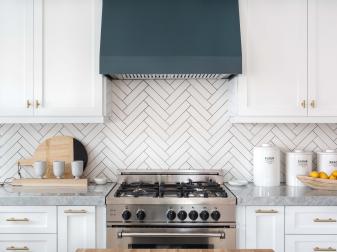How to Choose the Right Tile for Your Home
Learn all about the different types of tile and slabs that can be used on floors, walls and countertops including ceramic, porcelain, cement, marble and more. Plus, we’ll explain PEI rating, glazing and which tiles are easiest to install.
When it comes to picking out tile or solid-surface slab material, there are many factors to keep in mind. Is it natural or man-made? How well can it withstand wear and tear? Is the material resistant to stains and water? Is it easy to clean and maintain?
To help you navigate these questions, we’ll take a look at different types of tiles and which areas of your home they’re most suitable for. We’ll also touch on some pros and cons of each material and the difficulty of installation for those who are considering the DIY route.

Ceramic
Most types of tiles made from clay or a clay mixture and kiln-fired are considered to be a part of the larger classification of tile called ceramic. These tiles can be split into two groups, porcelain tiles and non-porcelain tiles; non-porcelain tiles are commonly referred to as ceramic tiles.
Non-porcelain ceramic tiles are generally made from red (often terra cotta) or white clay that's fired in a kiln. When shopping for ceramic tiles, you may notice something called a PEI rating. Developed by the Porcelain Enamel Institute, this rating system is the only reliable gauge for consumers to use in determining wear expectations for a particular tile application.
- PEI Class 1 Rating (no foot traffic): Recommended for wall use only in residential and commercial applications
- PEI Class 2 Rating (light traffic): Recommended for both wall use and bathroom-floor applications
- PEI Class 3 Rating (light to moderate traffic): Recommended for countertops, walls and floors where normal foot traffic is expected
- PEI Class 4 Rating (moderate to heavy traffic): Recommended for all residential applications as well as medium commercial and light institutional
- PEI Class 5 Rating (heavy to extra-heavy traffic): Recommended for all residential as well as heavy commercial and institutional applications
Ceramic usually carries a PEI rating of 0 to 3 and is suitable for light to moderate traffic. It is more water-absorbent than porcelain and more prone to wear and tear. That said, ceramic generally costs less than porcelain tiles. It is also easier to cut with a basic tile saw, so homeowners may prefer ceramic for DIY projects.
Ceramic tile is strong, colorfast and flame-resistant. It doesn’t conduct heat or electricity; it’s hygienic; it won’t absorb odors or emit hazardous chemicals; it won’t swell or contract in extreme temperatures; and it’s easy to clean. Given its durability and versatility, ceramic tiles can be used in a wide array of locations in your home, including bathroom countertops, kitchen backsplashes and floors in any room. “Ceramic tile is an optimal selection for walls, often providing a color palette not available through other tile categories,” says Lauren Cherkas, president and chief sales officer at Artistic Tile.
How to Install a Ceramic Tile Floor
Learn how to lay a patterned ceramic tile floor in a kitchen or bathroom.
Porcelain
Porcelain tile is generally made by firing clays at a very high temperature, resulting in a tile that's dense, impervious, fine-grained and smooth. Porcelain tiles usually have a much lower water absorption rate than ceramic tiles, making them more frost-resistant, although not frost-proof. Glazed porcelain tiles are much harder and have more damage resistance than ceramic tiles, so they should be suitable for almost any indoor residential application.
Most porcelain tiles have a PEI rating of 5. Given their low porosity and durability, porcelain tiles are a good candidate for areas that receive high traffic or are prone to getting wet, such as showers and bathroom counters. “Porcelain is generally suitable throughout the home but should be selected with care,” says Cherkas. “Lacking the warmth of natural stone, porcelain tends to make spaces feel colder.”
The toughness and durability of porcelain make it hard to cut with a basic tile saw, so it may not be an optimal choice for DIY projects. Professional installers will have the correct tools to cut porcelain cleanly and concisely. Porcelain is also relatively expensive compared to ceramic, so costs may add up for larger projects.
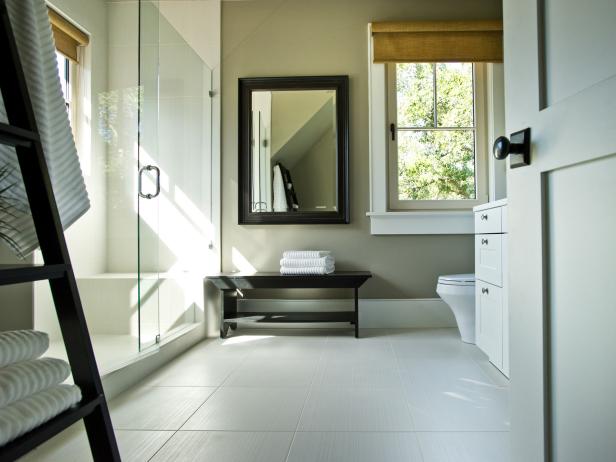
White Porcelain Floor Tile
Slate
Slate is a fine-grained, metamorphic rock, commonly derived from sedimentary rock shale. It's composed mostly of micas, chlorite and quartz and is best suited for floors, walkways, roofing, kitchen countertops and wet bars. It’s a dense, tough composite typically available in blacks, grays and greens, although it can also be found in many other colors. Slate shades within the same color family often vary. Veined patterns from overseas are also available. Unless it has been honed smooth, slate’s surface can be recognized by its distinct cleft pattern. “If a client tends to gravitate towards natural material and desires it in a high traffic area, I like to use slate,” says Kendra Nash of Nash Design Group. “It has a gorgeous texture and wears nicely without the constant worry that it is too precious.”
While slate is known for its striking appearance, it falls on the higher end of pricing for tiles. Slate tiles are also tricky to install on your own, so you will need to hire a professional. During installation, you must seal the slate to fill the pores and then seal it again for surface protection. Given the cost, some homeowners reserve slate for higher profile areas of the home such as the entryway.
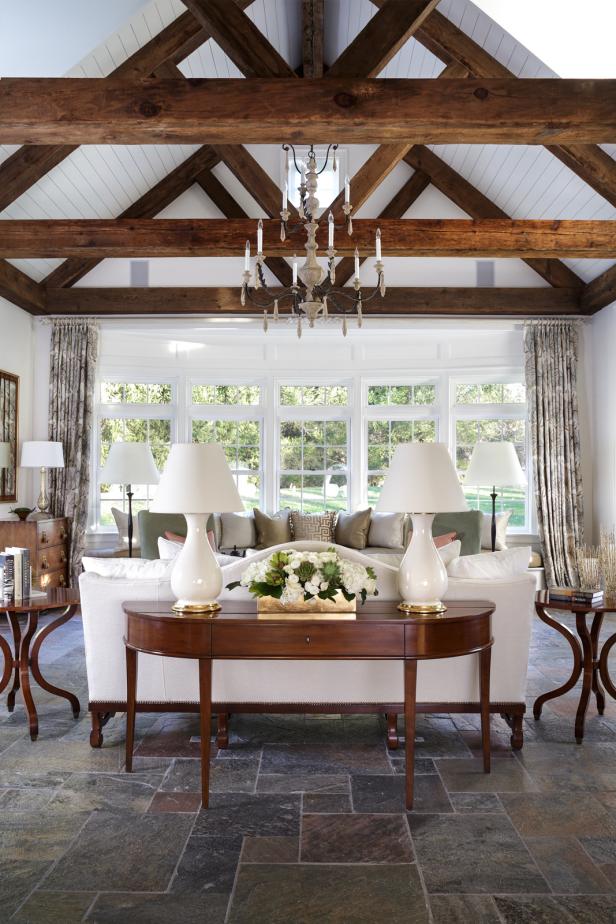
Peter Rymwid
Slate Floor Tile
Marble
Marble is one of the more popular natural stones, formed from fossil sediment deposits that have been pressed by the natural geologic forces of nature for millions of years. Much as diamonds are created from coal, marble was once limestone that underwent a metamorphosis from the intense pressures and high temperatures within the earth.
Marble is available in unique colors with veining of great depth and intensity. Most marble products are softer and have more porosity than granite. Because it's softer, it's most often used in bathroom walls and flooring, as well as for tub decks, fireplace surrounds, furniture, sculptures and courtyards. Marble is not recommended for kitchens unless the stone is honed and sealed. “For higher traffic areas, a homeowner may want to avoid using a highly porous material like a Carrera marble,” says Stephanie Waskins from Lark + Palm. “But in a guest bathroom or a powder room it could be absolutely doable.”
Marble is a high-end tile material and can cost twice as much as ceramic, or even more for certain types of marble. Installing marble tiles is tricky for novice installers since marble breaks easily and requires specialized tools to cut. It is best to hire professional installers to avoid losing money on tile breakage.
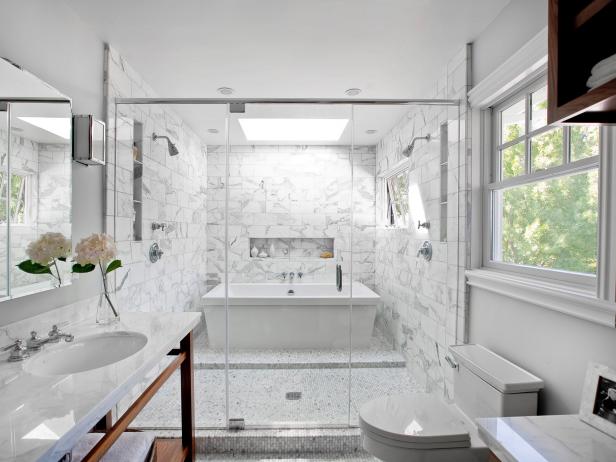
Marble-Tiled Bathroom
Limestone
Limestone is a sedimentary rock consisting mostly of calcium carbonate and is formed from the remains of ancient sea life such as oysters and mussels that have been compressed over millions of years. It is found in great abundance in many parts of the world, generally in earthy colors such as off-white, gray and beige. Limestone is less dense than marble or travertine (itself a form of limestone), but limestone that contains the mineral dolomite is hard enough to be polished to a shine much like marble can be. Its best uses are for structural walls, entry walls, floors, fireplace surrounds, vanities and shower walls. It's generally not recommended for kitchen countertops and wet bars, because fruit juices and alcohol products can stain them. It's also prone to scratches.
Limestone is relatively affordable compared to other stones like marble or slate. If you’re looking for a natural stone but are working with budget constraints, this is a good option. Since limestone is a softer tile material, keep in mind that it’s prone to cracking and breaking, which can make installation difficult. Limestone is also porous, so grout can easily seep into the pores during installation, complicating the grouting process.
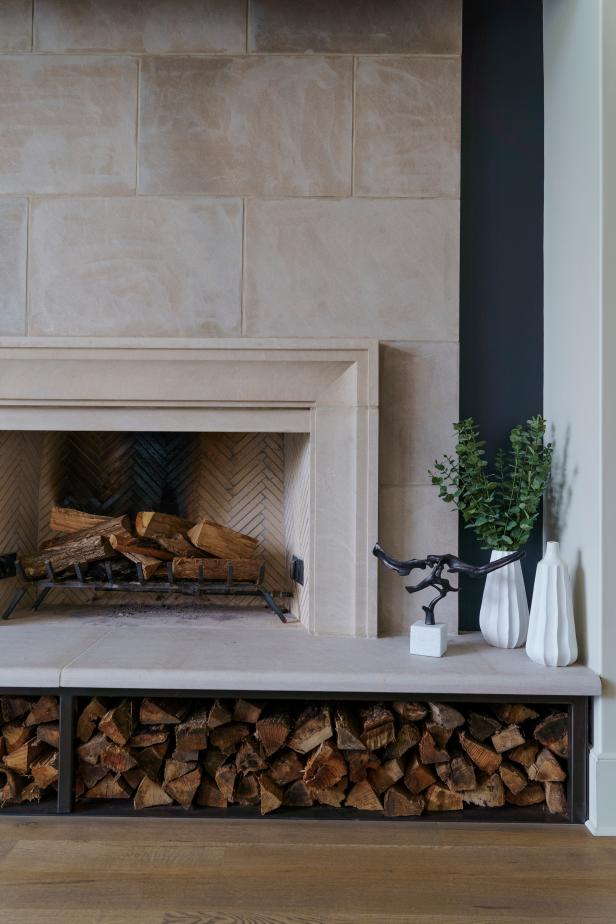
Lisa Hubbard
Limestone Fireplace Surround + Tile
Travertine
Travertine is a variety of limestone that is formed in pools by the precipitation of hot mineral-rich spring water. It's another form of marble that's less dense than high-grade marble and highly porous. The divots characteristic of travertine are created by carbon dioxide bubbles that became trapped as the stone is being formed.
Travertine usually ranges from light beige to brown. It can have a honed, unfinished surface, or the holes can be filled and then polished to a high gloss. “We have lots of clients that are drawn to natural materials like marble, slate, travertine and limestone,” says Nash. “They like the organic veining and love the idea that the earth created the intricate details, like the color, texture and lines within the natural stone.”
Travertine is best used in entry walls, floors, fireplace surrounds, vanities, shower walls, tub decks and mosaics. It is not recommended for kitchen or wet-bar countertops, since it can be easily scratched and is prone to staining by fruit juices and alcoholic products. Travertine requires a degree of special care, as some cleaning products can be destructive to its surface.
Travertine varies widely in price, depending on the quality and finish. It generally costs more than porcelain and ceramic but is one of the more affordable options if you’re looking at natural stones. You can find travertine tiles for under $10 per square foot to as much as $30 per square foot. A naturally textured finish costs less money than a polished, glossy finish.
If you’re embarking on a DIY project, travertine may not be the ideal option. The hardness of the stone requires special cutting tools. Grouting can also be painstaking due to the porosity of the stone, and you must properly seal the tiles before grouting.
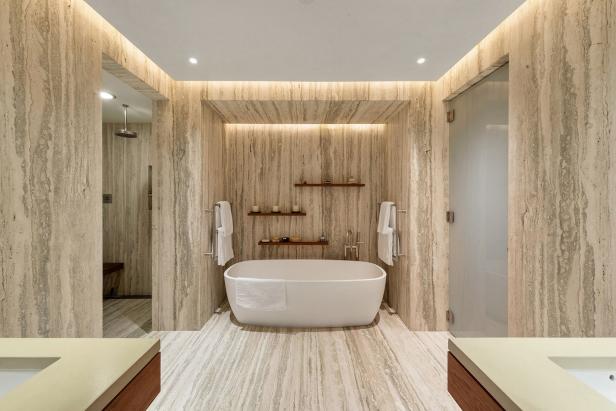
Evan Joseph Images
Travertine Bathroom
Granite
Granite is a dense-grained hard stone formed either from the melting of sediments deep within the earth or through magma (lava) activity. The sediments were held under extreme pressure and temperatures for millions of years and then brought to the surface through the upheaval of the crust that formed mountains. This process produces granite, a quartz-based product, which combines strength and durability with rich patterns and veining.
Minerals within granite typically appear as small flecks throughout the stone, often creating a salt-and-pepper look. Other types of granite have veining similar to marble. Once polished, natural granite will maintain its high-gloss finish virtually forever. It also cleans in seconds. Because of its durability, it can be used for kitchen countertops, wet bars, entry walls, floors, fireplaces and bathroom vanities. Flamed or honed granite can be used almost anywhere. Buyers should note that no two natural stone tiles will be the same — each has its own natural beauty. Homeowners must be sure to seal the stone periodically, however, in order to maintain that beauty.
Granite has many advantages, but these do come at a cost, as granite tiles fall on the higher end of the price spectrum. You may also need to budget in costs for a professional installer since granite is difficult to install on your own. The heaviness of granite and the irregular edges make it difficult to place with care and precision. Granite is also tough to cut on account of its hardness.
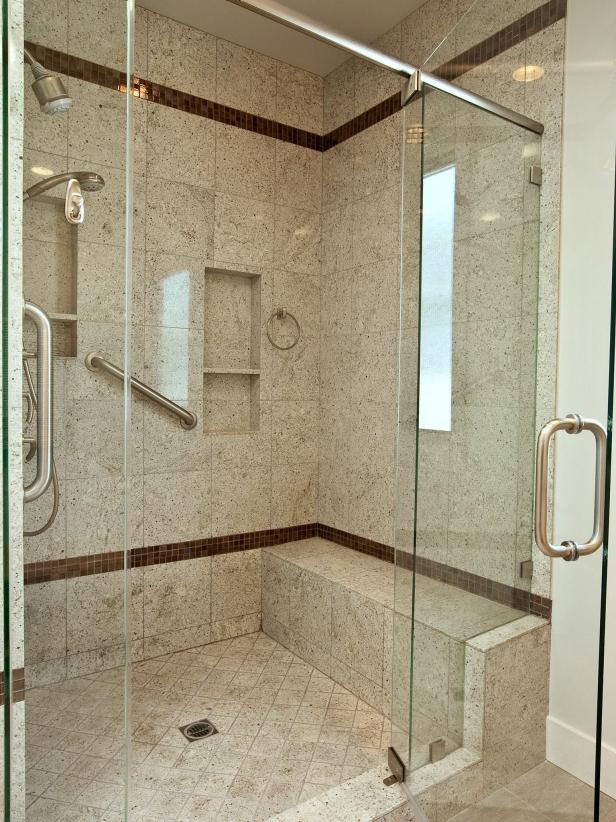
Stephanie Hatten, Amy Willimans Photography
Granite Tile Shower
Metal
Metal is a less common tile material but is an excellent choice for decorative purposes. Metallic tiles come in a variety of materials with different finishes and textures. Stainless steel is a popular tile known for its shiny and polished surface. If you prefer a metal with a less industrial look, you can opt for metal with a muted finish such as brushed nickel. For a rustic appearance, copper or bronze are good options. You may want to seal copper tiles to prevent oxidization — though some homeowners appreciate the patina that oxidization produces.
Metallic tiles are durable and handle fluctuations in temperature, making them ideal for kitchens. Stainless steel is commonly used in kitchen backsplashes due to its easy maintenance, as well as the fact that they often match kitchen appliances. Homeowners often use metal tiles on ceilings or as accents on walls, sometimes in contrast to warmer materials like wood or leather. Metallic tiles are less common on floors, but some homeowners use tiles with textured surfaces to reduce slipping in high-traffic areas like stairs or entryways.
Unlike stone tiles, metal tiles are non-porous and thus easier to maintain. Oftentimes they can be cleaned with water and mild soap, though stainless steel usually requires a specific cleaner. Metallic tiles don’t always require grout, since they typically lie flush against each other. This can make installation easier than stone tiles. Due to metal’s conductive nature, be mindful when installing it around electrical outlets or anywhere where it might be in close proximity to electrical wiring.
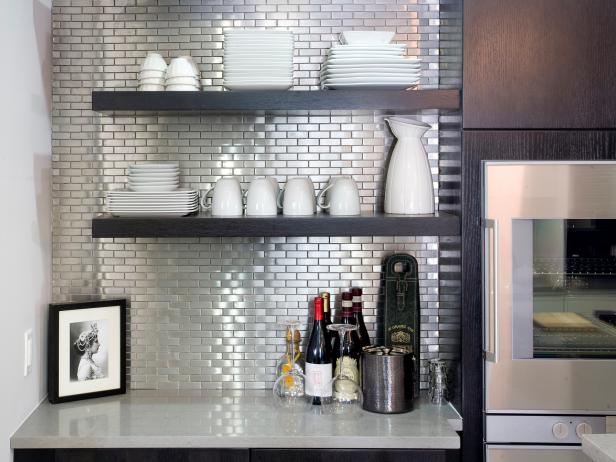
Chris Amaral
Stainless Steel Backsplash Tile
Onyx
Onyx is a natural stone derived from limestone deposits. It’s best known for its blue hues but also comes in green, brown, white and pink hues, depending on the amount of iron it contains. Onyx has a rich and textured appearance, and each tile will vary from one to the next. These qualities make it an excellent decorative tile.
Onyx is considered a higher-end stone and is known for its durability when properly maintained. That said, it is softer and more delicate than stones like quartz or granite, making it more susceptible to scratches and nicks. For this reason, it is not ideal for areas that see a lot of traffic. It’s also not ideal for kitchen counters, where the tiles are likely to get scratched, chipped or stained from acidic materials like lemon juice or vinegar. Onyx tiles fare well in areas that wouldn’t get much wear and tear, such as bathroom walls, accent walls, the area around the fireplace or vanity countertops.
The porosity of onyx requires that you seal it to prevent staining and protect it from water. It’s not an optimal choice for homeowners seeking a low-maintenance tile.

Design House
Onyx Tile Floor
Cement
Cement is made from a mixture of stone, sand and water that has been hydraulically pressed and cured for a number of days. Cement tiles are extremely durable, with even consistency across all tiles due to the hydraulic pressurization process. The top layer of cement tiles is stamped with a customized pattern and colored with natural pigment that gives the tiles a matte finish. Cement tiles can be customized with bold and colorful patterns, making them ideal for backsplashes, accent walls and areas of the home that are highly visible.
Cement tiles have recently grown in popularity but are tricky to install. The tiles are very porous and susceptible to staining from grout or sitting water. If you hire a professional to install your cement tiles, make sure the contractor is familiar with cement installation, since the process has its idiosyncrasies. Due to the porosity, you’ll need to seal cement tiles generously and frequently. Bear in mind that cement develops a patina over time. Some homeowners find the patina attractive, but if you want to prevent the patina from developing, you can gently sand the surface down and reseal it.
If budget is a concern, keep in mind that cement tiles are pricier than ceramic and porcelain. Tiles typically run $10 to $30 per square foot.
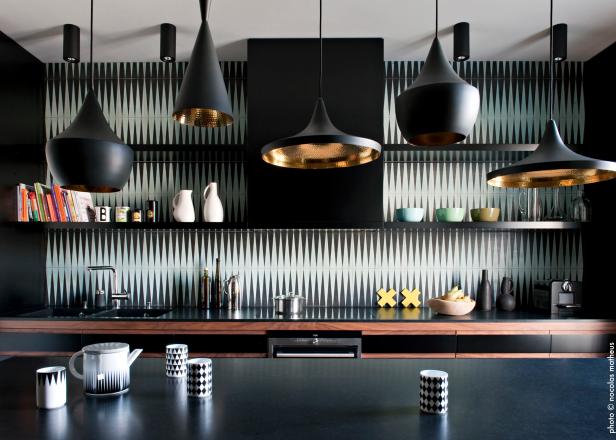
Cement Backsplash Tile
Mosaic
Mosaic tiles are available in a variety of materials and shapes, but all share one thing in common: the small size. Mosaic tiles are an attractive alternative to large-format square-cut tiles, typically measuring less than 2 square inches. Mosaic tiles are available as squares, hexagons, rectangles and other geometric shapes. They are typically sold in square sheets on which multiple tiles have been glued to a mesh backing. The tiles are already spaced apart, so installation is fairly simple and ideal for DIY projects.
Given their decorative appeal, mosaic tiles are a good option for backsplashes and accent walls. Certain materials are more prone to staining and water damage, so bear that in mind when picking the material of your tiles. Mosaic tiles also require more grout, due to their smaller size. “The smaller the tile the more grout is necessary,” says Waskins. “Grout can be a nuisance to keep pristine over time. We tend to minimize the area between tiles for this reason.”
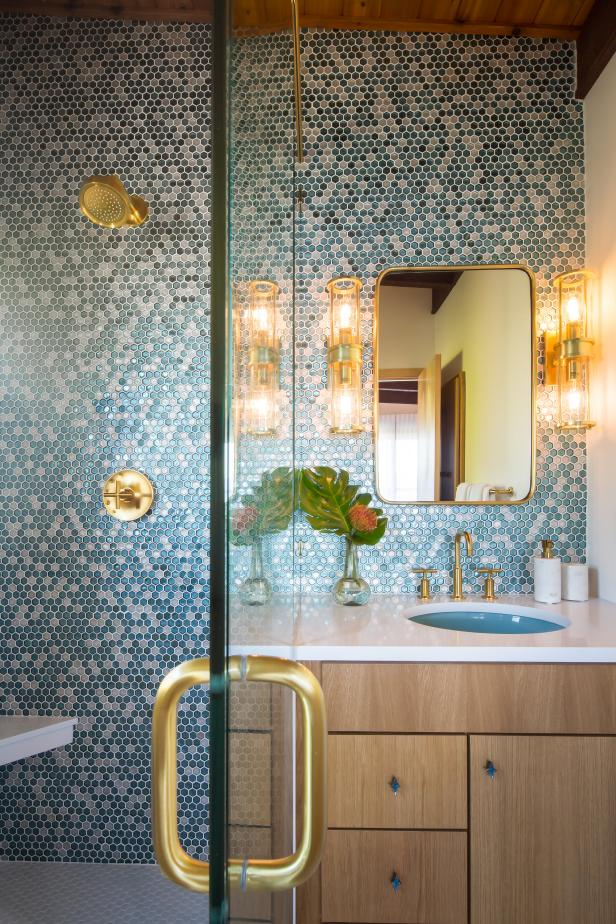
Wynne H Earle Photography
Mosaic Bathroom Tile
100+ Gorgeous Kitchen Backsplash Ideas 102 Photos
Explore dozens of beautiful kitchen backsplash ideas comprising all different materials, colors and designs.










